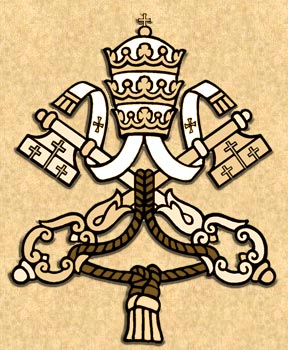
- In 1054, a formal split called a schism took place between the Eastern Church centered in Constantinople and the Western Church centered in Rome. Trouble between the two had been brewing for centuries because of cultural, political, and theological differences.
More than five centuries later, in what is now known as Belarus and Ukraine, but what was then controlled by Poland-Lithuania, the metropolitan of Kyiv and five other bishops decided to commit the millions of Christians under their pastoral care to reunion with Rome. Josaphat Kunsevich who was born in 1580 or 1584 was still a young boy when the Synod of Brest-Litovsk took place in 1595-96, but he was witness to the results both positive and negative.
Many of the faithful did not agree with the bishop’s decision to return to communion with Rome and both sides tried to resolve this disagreement not only with words but with violence. Martyrs died on both sides. Josaphat was a voice of Christian peace in this dissent.
After an apprenticeship to a merchant, Josaphat turned down a partnership in the business and entered the monastery of the Holy Trinity at Vilna in 1604. Within the monastery he found a soul mate in Joseph Benjamin Rutsky. Rutsky shared the young Josaphat's passion to work for reunion with Rome. Rutsky eventually became the metropolitan of Kyiv and Josaphat the abbot at Vilna.
Josaphat faced problems when he became first bishop of Vitebsk and then Polotsk in 1617. The church there was literally and figuratively in ruins with buildings falling apart, clergy marrying two or three times, and monks and clergy everywhere not really interested in pastoral care or model Christian living. Within three years, Josaphat rebuilt the church by holding synods, publishing a catechism to be used all over, and enforcing rules of conduct for clergy. But his most compelling argument was his own life which he spent preaching, instructing others in the faith, visiting the needy of the towns.
Despite all his work and the respect he had, dissenters found fertile ground with they set up their own bishops in the exact same area. Meletius Smotritsky was named his rival archbishop of Polotsk. Riots broke out when the King of Poland Sigismund III Vasa named Josaphat the only legitimate archbishop. His former diocese of Vitebsk turned completely against the reunion along with two other cities.
Another problem was that the very Catholics he looked to for communion opposed him as well. Catholics who should have been his support didn't like the way he insisted on the use of the Byzantine rite instead of the Roman rite. Out of fear or ignorance, Leo Sapiah, chancellor of Lithuania, chose to believe stories that Josaphat was inciting the people to violence and instead of coming to his aid, condemned him.
In October 1623, Josaphat decided to return to Vitebsk to try to calm the troubles himself. The dissenters saw their chance to get rid of Josaphat and discredit him if they could only stir Josaphat's party to strike the first blow. Then they would have an excuse to strike back. But Josaphat insisted that his party not react in anyway that did not show patience and forbearance. When the dissenters saw that they were not getting the violent response they had hoped for they decided to wear Josaphat and the others down as they plotted more direct action. A priest named Elias went to the house where Josaphat was staying and shouted insults and threats to everyone he saw, focusing on denouncing Josaphat and the Church of Rome. Josaphat knew of the plot against him and spent his day in prayer.
When Elias came back the next morning of November 12, the Josaphat’s servants were at their wits' ends and begged permission to do something. Before he went off to say his office he told them they could lock Elias away if he caused trouble again. When he returned to the house he found that the servants had done just that but Josaphat let Elias out of the room.
It was, however, too late. The mistake had been made. Elias had not been hurt in anyway but as soon as the mob saw that Elias had been locked up they rejoiced in the excuse they had been waiting for. Bells were rung and mobs descended on the house.
Josaphat came out in the courtyard to see the mob beating and trampling his friends and servants. He cried out, "My children what are you doing with my servants? If you have anything against me, here I am, but leave them alone!" With shouts of "Kill the papist" Josaphat was hit with a stick, then an axe, and finally shot through the head. His bloody body was dragged to the river and thrown in.
As usual violence had the opposite affect from that intended. Regret and horror at how far the violence had gone and the loss of their archbishop swung public opinion over toward the Catholics and unity. Eventually even Archbishop Meletius Smotritsky, Josaphat's rival, was reconciled with Rome. In 1867 Josaphat became the first saint of the Eastern Church to be formally canonized by Rome.









No comments:
Post a Comment